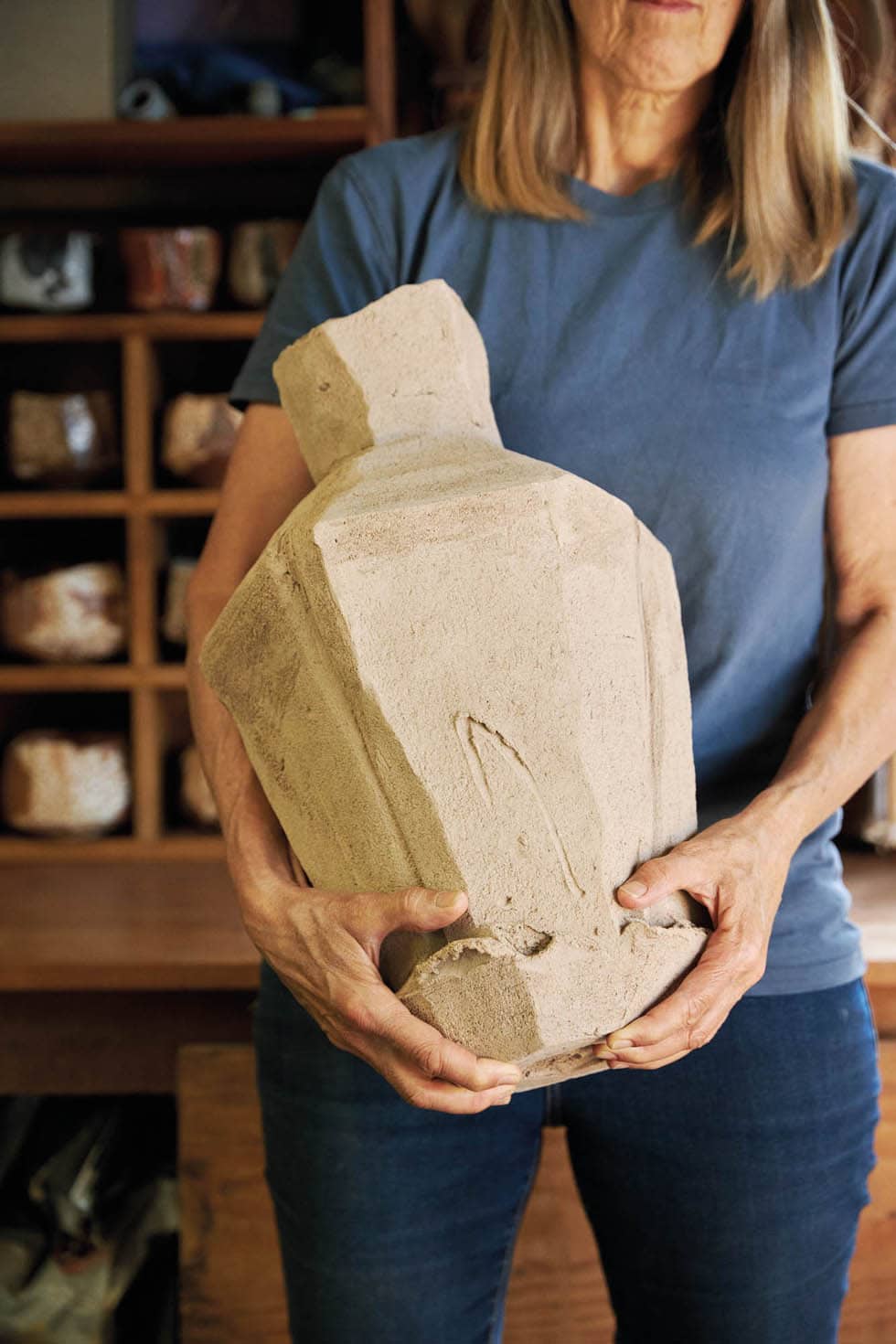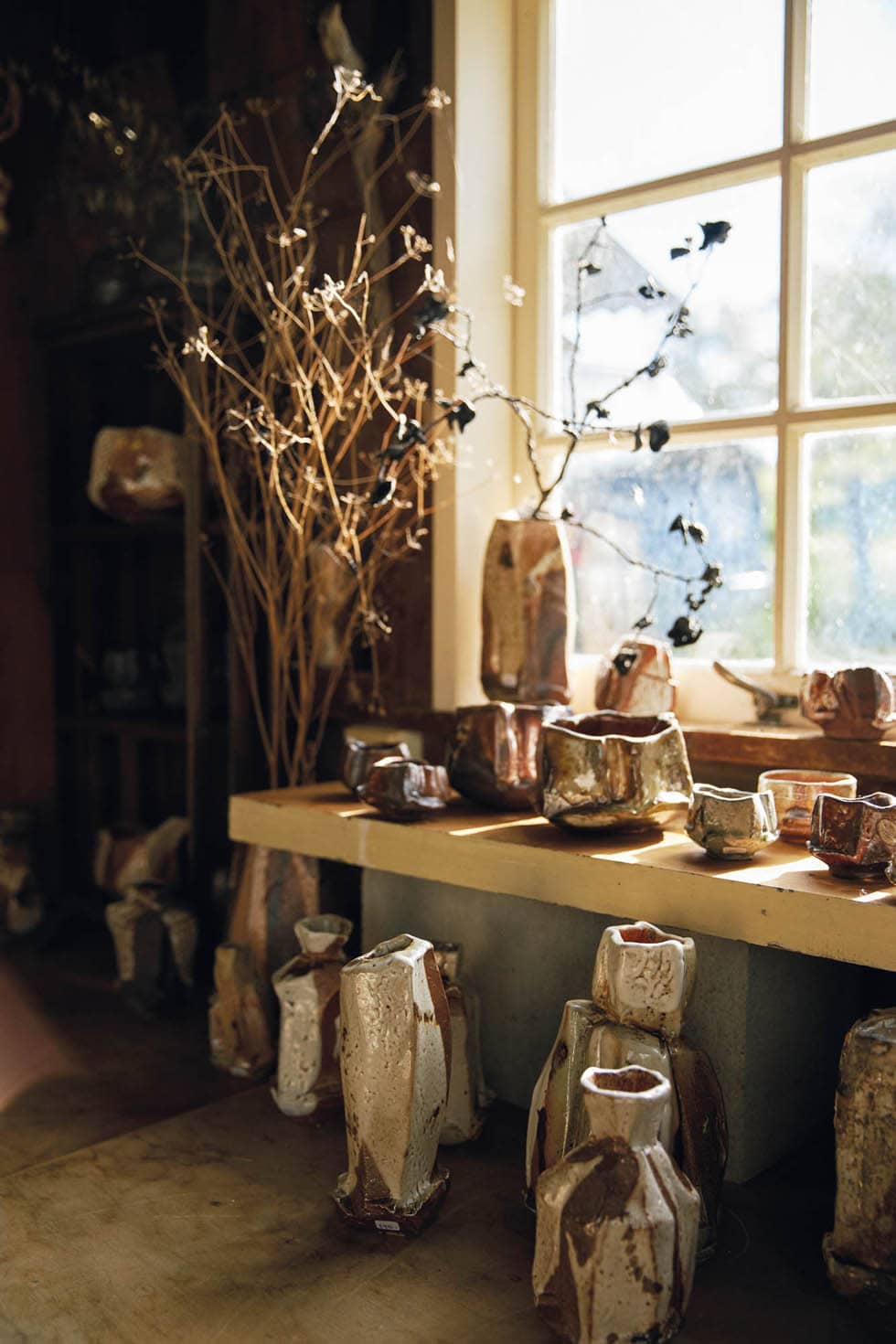German-born Elena Renker was into pottery from the moment she was introduced to it by a wonderful craft teacher as a child. She later made plans to spend a year working in a pottery in the village of Bergen in Germany’s Bavaria, but before she did so, took up an invitation from a friend to spend three months at India’s Golden Bridge Pottery. She had an amazing time, and for someone who’d always enjoyed making functional, everyday objects, it planted a seed. The year in Bergen followed, before she moved to Bavaria’s capital, Munich, to study graphic design, got married, got pregnant and immigrated to New Zealand. In 1998, 20 years after her initial stints, she started potting again when the youngest of her five children started school.

Where are you based now, Elena? I live and work in Okura/Long Bay [in Tāmaki Makaurau/Auckland]. I bought some land out here 38 years ago and have lived here ever since. I built my studio here in 2000 and my first wood-fired kiln in 2009.
Your pieces are perfectly imperfect — what methods do you use to create them? A large part of my functional work is thrown on the wheel. I often deform my pieces slightly as it makes them more organic-looking and nicer to hold. I usually make my large vases by coiling, and my faceted pots are cut and formed from a solid piece of clay in very quick, gestural movements, then hollowed out. I like my pots to be loose and irregular. I want the touch of my hand to be visible on the work.
Your glazes and firing add a whole lot of character too… Most of my work is finished with a Japanese shino-style glaze made from a local feldspar [a group of rock-forming minerals]. It’s very interesting because everything we usually consider to be a glaze fault — like crawling, pinholing and crazing — is what this glaze is supposed to do. It looks different every time, especially in combination with the ash from the wood firing, and the results can be quite unpredictable. What I love most about this glaze is that there are so many surface variations, you can discover something new every time you look at it.

There’s a risk something might not go to plan at any stage in the process — are there any life lessons clay has taught you in this regard? There are so many things that can go wrong when making pottery — it keeps us potters humble. Many pots crack while drying and can’t be saved, or something will go wrong with the glaze or the firing — but sometimes cracks can add to the pot.
I’m very inspired by Japanese pottery and their attitude to pots. Whereas traditionally Europeans were looking for perfection, the Japanese like the imperfections. They say a pot should reflect life, so being able to see the clay, the hand of the maker and the result of the firing process is really important to them. I once saw a pot with a large crack in it in a gallery in Kyoto, and when I asked about it, I was told it was more expensive than the pot that was intact because it showed the force of the kiln and fire.



We’ve been impressed by some of your large pieces on display at Public Record, who you show with in Tāmaki Makaurau — does it require a different kind of energy to work at this scale? Yes, it’s hard work, but it’s also very satisfying. For some of the pieces, I start with more than 50kg of clay, so it’s physically hard, but I love making big pieces and want to do more of that.



You have a special interest in the tea bowl as a form — what drew you to this object? I was introduced to tea bowls by chance. In 2009, a friend was invited to a tea bowl festival in Korea, but he wasn’t able to go, so he asked if I’d be interested. I jumped at the opportunity.
The 10-day festival took place in a small town in central Korea. I knew absolutely nothing about tea traditions, but met potters from around the world and learned about the intricacies of tea bowls and tea ceremonies. I ended up being invited back five years in a row, so I got to know the people and the place pretty well and became known as a tea bowl maker.

What do you have coming up for 2024? I have a solo exhibition at Public Record in June, in August I’ll be travelling to the US to teach some workshops there, then in October I’ll be attending Clay Week in Nelson.
What keeps you motivated? I just love the process of making pots and wood firing, and I love experimenting with new techniques. I’m always asking myself what would happen if I did this or that. There are always so many ideas buzzing around in my head and so many things I’d like to try. A lot of them don’t work out, but sometimes they do and that makes it all worthwhile. I’m happiest with my hands in clay.
elenarenker.com
Interview Alice Lines
Photography Greta van der Star



